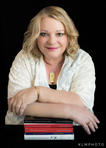Christy K. Robinson's Blog: William & Mary Barrett Dyer--17th century England & New England, page 2
January 15, 2020
Mary Dyer and Social Justice
A script commissioned by Julie Esker Dishman© 2019 Christy K Robinson
If you’ve heard of Mary Barrett Dyer, who lived in the mid-1600s, it’s probably as a Quaker woman who was hanged because of her religious beliefs. But historical research shows that Mary Dyer—married in an Anglican service, emigrated to Boston in 1635 as a Puritan, banished as an Antinomian heretic, co-founded Rhode Island as a non-conformist, possibly worshiped with Baptists, became a Quaker in England—actually was hanged for her civil disobedience!
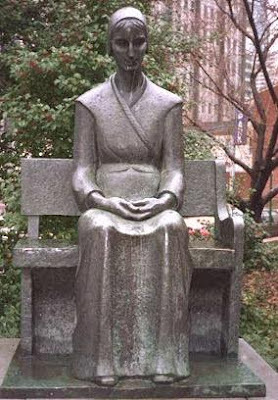
From 1657, she was arrested and jailed in New Haven and Plymouth colonies, and was in and out of prison in Massachusetts Bay Colony, some say because she preached. But there’s no record of her spoken words, nor a record of her being whipped, the fate of women who taught religion to men.
We know from her only surviving letter, written from prison to the General Court in Boston, thatMary Dyer was reported as lovely, well-spoken and educated, and had social advantages with her well-connected husband, a prosperous mariner, farmer, and the first attorney general in America. The Boston government did not want to make a martyr of her and begged her to leave and be safe in Rhode Island. But Mary used those advantages to force their response .
After they hanged her in 1660, English Quakers rewrote and edited her letter to elicit tolerance for their cause. As a result, King Charles II put an end to colonial executions for conscience’s sake. He also ratified the Rhode Island charter of 1663, which brought religious liberty and free passage in New England, as Mary had demanded. That charter was used as a template for the US Constitution’s Bill of Rights.
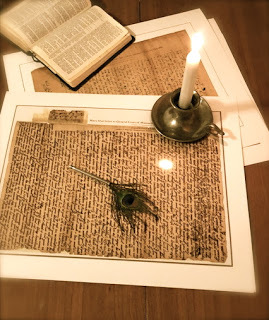
What Mary Dyer and the Rhode Island founders sent down through the ages with their testimonies and documents, was justice, mercy, compassion, and equality for all people of all faiths, all nationalities. Their philosophy of separation of church and state allowed for a wide spectrum of belief and behavior without oversight by government or regulators. Most were godly people who knew firsthand the persecution and oppression of theocracyThey encouraged kindness and tolerance without demanding conformity to one dogma or creed. Instead of stealing land, they purchased it for a fair price, and they were reluctant to make war on Native Americans.
Extending those qualities to social issues today would mean that we don’t dehumanize refugees in crowded pens with inhumane conditions. We don’t withhold health care, shelter, or sustenance from the elderly, the disabled or infirm, or children or strangers among us. It would mean that government officials don’t take bribes or benefit financially from their elected or appointed positions, and that political campaigns are financed by the people of that jurisdiction instead of billionaires and corporations.
The legacy of Mary Dyer’s exemplary life and sacrificial death is that under our Constitution, we have the freedom—apart from government—to speak, to freely assemble, to protest, and to worship according to our conscience—what they called “soul liberty” in her day. Today we call them basic human rights.
As people of firm faith in one religion or another, or people of no faith, we all have a responsibility to nurture one another and to care for our planet, recognizing the liberty and human rights of future generations.
The Golden Rule transcends time, religions, and cultures
Mary Dyer and Social Justice, part 1.
mp3 file, about one minute

Mary Dyer and Social Justice, part 2.
mp3 file, about 4 minutes

*****
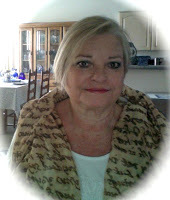
Christy K Robinson is author of these books (click the colored title): We Shall Be Changed (2010) Mary Dyer Illuminated Vol. 1 (2013) Mary Dyer: For Such a Time as This Vol. 2 (2014) The Dyers of London, Boston, & Newport Vol. 3 (2014) Effigy Hunter (2015) Anne Marbury Hutchinson: American Founding Mother(2018)
And of these sites: Discovering Love (inspiration and service) Rooting for Ancestors (history and genealogy) William and Mary Barrett Dyer(17th century culture and history of England and New England) Editornado [ed•i•tohr•NAY•doh] (Words. Communications. Book reviews. Cartoons.)
Published on January 15, 2020 23:00
December 31, 2019
Forcing is not freedom
"Judeo-Christian" roots of America—NOT supported by fact
© 2020 Christy K Robinson
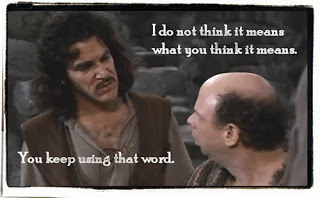
In the more than 20 years I've been researching and writing about Anne Hutchinson and Mary Dyer and their relation to religious liberty, my published articles have often received comments saying, essentially, "Pish-posh! Judeo-Christian beliefs form the basis of American life."
The colonies in what became the United States in 1776 were established as Church of England colonies under the English Crown. But beginning in the 1620s, the New England colonies (Plymouth, Massachusetts Bay, Connecticut, New Haven, New Hampshire) were intended to be Separatist or Puritan (Puritans being a purifying movement within the Church of England) theocracies.
The first thing the CofE/Puritan colonies did was establish a theocratic government which determined every facet of the colonials' lives. People were flogged, hanged, tortured, banished, enslaved, etc., because of these religious governments.
Massachusetts Bay Colony was founded as a theocracy. Men who were church members were a rigorously tested, tithe-paying member of the Puritan church. If they were church members, they might be eligible to be freemen, which gave them privileges in business, and required them to serve on juries and assemblies, and vote.
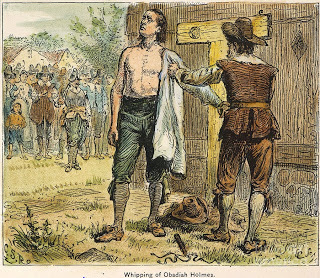 Baptist minister Obadiah Holmes, Sr., was flogged
Baptist minister Obadiah Holmes, Sr., was floggednearly to death in Massachusetts Bay Colony.Magistrates and officials were often ordained ministers. They formed the core of the theocracy. And they hanged adulterers, thieves, Quakers, and witches. They treated Baptists and fornicators in the same way: they beat them to a pulp. Catholics were not allowed. They enslaved Native Americans because they were pagan.
Rhode Island, founded by Roger Williams and the Anne Hutchinson party (including William and Mary Dyer), was established between 1636 and 1638 as a SECULAR DEMOCRACY, that is, a non-religious “body politick” governed by the People. The 1663 Rhode Island charter, similar to a constitution, was written by John Clarke, Roger Williams--and probably also William Dyer, who was the first attorney general in North America, including Canada and the Spanish and French colonies. William Dyer was far more than just a "courier" who brought the ratified charters back from England in the 1640s, 1650s, and 1663. William had lost his friend Anne Hutchinson and his beloved wife Mary to theocratic persecution and execution, so he had a huge stake in the outcome of religious liberty in New England.
All civil states, with their officers of justice, in their respective constitutions and administrations, are proved essentially civil, and therefore not judges, governors, or defenders of the spiritual, or Christian, state and worship. — Roger Williams
The Puritan theocracies of New England in the 1600s demanded that all freemen (voters, jurors, etc.) take an oath of allegiance to their colony. But the Quakers, starting in the late 1650s, refused to take any oath because the Bible (same Bible the Puritans used) said to let their yes be yes, and no be no, and not swear by anything on the earth or in heaven. (In other words, be so upright, trustworthy, and honorable a person that your word stands for something.) So the Puritans fined them heavily, and confiscated their stock, crops, and lands. They also severely whipped the Quakers for not swearing the oath. The Puritans held this oath ceremony repeatedly through the year, so as to maximize their penalty fines. Then they awarded each other large land grants in compensation for their government service. Here's a specific case I wrote about: http://marybarrettdyer.blogspot.com/2012/06/grandparents-in-law-quaker-connection.html
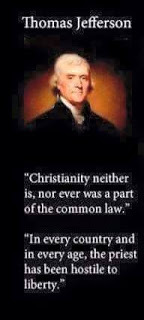
Fast-forward to New Jersey in 1720, where a Welsh Baptist minister, Nathaniel Jenkins, was a colleague of Obadiah Holmes Jr. of Newport, whose father had been flogged by the Boston theocracy in the early 1650s. Rev. Jenkins stood up in the New Jersey assembly (the legislature) and spoke eloquently on religious liberty when he persuaded them to quash a bill that would punish Unitarians (who believed in one God) for not believing in the Trinity of Father, Son, and Holy Spirit. Jenkins was a Trinitarian, by the way.
Fast-forward again to the writing and ratifying of the United States Constitution and its Bill of Rights (including the First Amendment). The "founders" of the United States, who wrote the Constitution and Bill of Rights, were the great-grandchildren of that very persecution. Only three or four generations away, and they knew their history intimately. They knew what religion does when married to government, and they took steps to keep them separate. They were godly men who governed in a secular framework.
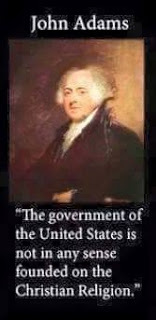
The Constitution is a completely secular document. It's not a religious document. The Founders knew intimately what religion mixed with government was currently doing in Europe, and what it had done to their great-grandparents of the 17th-century American colonies, and their great-great grandparents in England. That First Amendment was modeled on some Virginia legislation, and upon the 1663 Rhode Island charter.
The United States were not founded as a Judeo-Christian society. (Jews were safe in Newport, Rhode Island because of their charter allowing religious liberty, but not in other colonies.) The United States government was founded by Christians, agnostics, and Deists, who believed in a god or supernatural creator, but didn't necessarily believe that Jesus was God himself.
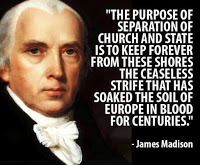
Six years after the Constitution was written, the young nation made a treaty with Tripoli.
"Art. 11. As the Government of the United States of America is not, in any sense, founded on the Christian religion; as it has in itself no character of enmity against the laws, religion, or tranquility, of Mussulmen (Muslims); and as the said States never entered into any war or act of hostility against any Mahometan (Mohammedan) nation, it is declared by the parties that no pretext arising from religious opinions shall ever produce an interruption of the harmony existing between the two countries." Source: Treaty of Tripoli, 1797
The use of this term [Judeo-Christian], which conveniently dismissed American anti-Semitism as foreign, exploded in the 1940s, appearing in thousands of essays, books, and speeches. As Americans mobilized against “totalitarian” Germany and Japan, and later the “godless” Soviet Union, appeals to Judeo-Christianity allowed Americans to define the United States as uniquely committed to human dignity and the virtuous defender of religious pluralism. Dwight Eisenhower famously proclaimed in 1953 that “our form of government” was rooted “in the Judeo-Christian concept.” ...Though I'm an advocate of religious liberty and separation of church and state like my ancestors on both sides of my family, I am a practicing Christian, and have been all my life. It's not just a label. It's what I do. I volunteer with groups that serve the homeless, the immigrants, the hungry, and those who need medical assistance. I'm also a church musician for numerous churches and fellowships over five decades. I attended Christian schools. I've worked for religious nonprofits as an employee or a contractor. I will tell you from long experience that separation of church and state strengthens faith-based organizations. America was founded by moral, high-minded people who had their own religious traditions, but didn't insert the spiritual realm into the documents upon which our rule of law and our culture depend.
Conservatives, in response, doubled down on their insistence that the United States was an inherently religious nation and appealed to Judeo-Christianity to challenge taxation and abortion. American values, wrote Secretary of Defense Elliot Richardson in 1973, called for Judeo-Christian charity, not “big government.” By the 1980s, the term encapsulated the right’s powerful cocktail of white resentment, sexism, and anti-welfare rage. Judeo-Christianity, writers implied, was more than a specific variation of American evangelism; rather, it was a timeless tradition whose defense necessitated opposition to affirmative action, equality for women and sexual minorities, and redistributionist policies. ...
Hardly a practicing Christian, [white nationalist Steve] Bannon has often claimed that societies’ strengths lay in their ethnic homogeneity. This is why, he argues, nationalists must smash the power of “globalism,” epitomized by international organizations, finance, and migration. For Bannon, however, this nationalist revolution also has a geopolitical aspect, best captured through a religious terminology. The white nations, he explained in a recent interview, constitute the “Judeo-Christian West,”which should to come together with Russia to defeat their Muslim and Chinese opponents. Indeed, Judeo-Christianity has been a long-standing obsession for Bannon.
Source: The New Republic, November 2019
As I've written elsewhere, the problem was not that our founding mothers and fathers had strong religious beliefs—they had such strong religious beliefs that they died for them—it’s that some of them tried to enforce their beliefs, lifestyle, values, etc., on others.
Forcing is the opposite of freedom.
*****
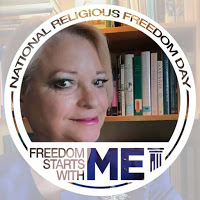
Christy K Robinson is author of these books (click the colored title): We Shall Be Changed (2010) Mary Dyer Illuminated Vol. 1 (2013) Mary Dyer: For Such a Time as This Vol. 2 (2014) The Dyers of London, Boston, & Newport Vol. 3 (2014) Effigy Hunter (2015) Anne Marbury Hutchinson: American Founding Mother (2018)
And of these sites: Discovering Love (inspiration and service)Rooting for Ancestors (history and genealogy)William and Mary Barrett Dyer(17th century culture and history of England and New England)Editornado [ed•i•tohr•NAY•doh] (Words. Communications. Book reviews. Cartoons.)
Published on December 31, 2019 23:00
December 22, 2019
���Purifying��� the customs and fun of Christmas
Why our ancestors didn���t celebrate the holiday
�� 2019 Christy K Robinson
Even as I finish out my 50th year as a church musician, playing keyboards for church preludes and choir parties, and accompanying vocalists and congregations during Advent and Christmas, I remember how our ancestors responded to holiday events in the 17th century.
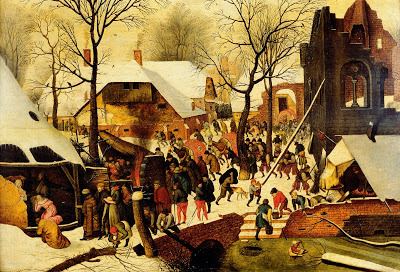 Brueghel the Younger: Adoration of the Magi, late 16th century.For a thousand years, European ancestors had celebrated Christ���s ���birth��� at midwinter with religious services, fasts and feasts (Advent was a four-week modified fast leading up to the Christmas feast and then 12 days of feasts and parties). It was during the religiously stringent mid-17th century that Christmas took a punch to the gut in Protestant England and New England.
Brueghel the Younger: Adoration of the Magi, late 16th century.For a thousand years, European ancestors had celebrated Christ���s ���birth��� at midwinter with religious services, fasts and feasts (Advent was a four-week modified fast leading up to the Christmas feast and then 12 days of feasts and parties). It was during the religiously stringent mid-17th century that Christmas took a punch to the gut in Protestant England and New England.The Christian church had adopted many pagan seasonal customs and co-opted their celebrations while proselytizing and building their culture and governments. The Yule, the holly and mistletoe, gift-giving, festivals of light and feasting, saint miracles, and much more originated thousands of years ago. But as Puritans, Separatists, and other non-conformists saw it, the ���Christ-mass��� was a bastardization of pagan revels with Roman Catholicism. Puritans (a.k.a. Congregationalists) had a mission to purify and purge Christianity of its sinful ways and prepare people for the imminent second advent of Christ.
The banning of Christmas celebrations has often been attributed to Oliver Cromwell, Lord Protector of the English Commonwealth from 1553 to 1558. The Parliamentary bans, however, occurred while he was a general, fighting decisive battles in the first English Civil War.
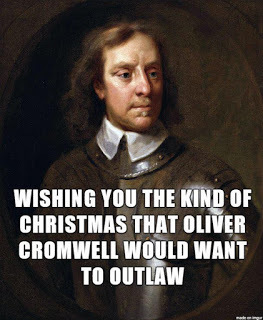 Cromwell didn't outlaw or ban Christmas,
Cromwell didn't outlaw or ban Christmas, but it makes a fun meme!1644, England ���Whereas some doubts have been raised whether the next [regularly scheduled last Wednesday of every month] Fast shall be celebrated, because it falleth on the day which heretofore was usually called the feast of the Nativity of our Saviour [Christmas]. The Lords and Commons in Parliament assembled doe order and ordaine that publique notice be given that the Fast appointed to be kept on the last Wednesday in every moneth ought to be observed untill it be otherwise ordered by both Houses of Parliament: And that this day in particular is to be kept with the more solemne humiliation, because it may call to remembrance our sinnes, and the sinnes of our forefathers, who have turned this Feast, pretending the memory of Christ into an extreame forgetfulnesse of him, by giving liberty to carnall and sensuall delights, being contrary to the life which Christ himselfe led here upon earth, and to the spirituall life of Christ in our soules for the sanctifying and saving whereof Christ was pleased both to take a humane life, and to lay it down againe.���
1647, England and Wales ���All Festivals and Holy Days abolished; ��� Forasmuch as the Feasts of the Nativity of Christ, Easter and Whitsuntide [Pentecost], and other Festivals commonly called Holy-Dayes, have been heretofore superstitiously used and observed Be it Ordained, by the Lords and Commons in Parliament assembled, That the said Feast of the Nativity of Christ, Easter and Whitsuntide, and all other Festival dayes, commonly called Holy-dayes, be no longer observed as Festivals or Holy-dayes within this Kingdome of England and Dominion of Wales, any Law, Statute, Custome, Constitution, or Cannon to the contrary in any wise notwithstanding[.] ���Source: Library of Congress
New England Separatists (Pilgrims) and Puritans were more zealous, more fundamentalist, more strict than their friends and brethren in England. Christmas was not celebrated in Plymouth Colony in 1621, as noted in my article HERE, and celebrations were much-frowned-upon by the theocracies of Massachusetts Bay, Connecticut, and New Haven in the 1630s and 1640s even while under the authority of King Charles I. As in England, people were encouraged to tattle on their neighbors who brought greenery into the house or held a Christmas feast or gave gifts.
1651, Massachusetts Bay ColonyWhen it comes to assigning ���blame��� for the banning of Christmas celebrations in New England, we could choose among several members of the theocratic government: Rev. John Cotton, Rev. John Wilson, Gov. Richard Bellingham, Sec. Edward Rawson, or Gov. John Endecott (Endecott is my suggestion for instigator because of his fanatical leanings, and his persecution of Baptists, Quakers, and others who would not conform to his narrow beliefs).
 Source:
The Charters and General Laws of the Colony and Province of Massachusetts.
Source:
The Charters and General Laws of the Colony and Province of Massachusetts.
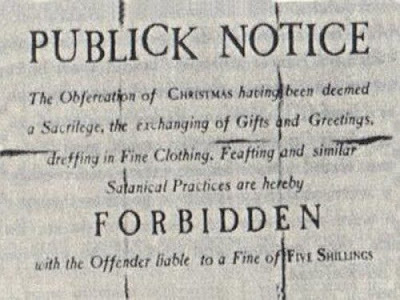 Satanical practices! Woe, woe!
Satanical practices! Woe, woe!The ordinance about Christmas is invariably listed between ordinances on gaming, dicing, and games of chance (bad, very bad!), so it might be reasonable to assume that one of the chief detractions of Christmas observance was not going to labor, not praying at home, and instead, getting intoxicated and gambling at the ordinaries. Ordinaries were licensed to sell beer and entertain travelers, and sometimes served as a community meetinghouse while church buildings were constructed. Gambling there was punishable by the same 5-shilling fine as celebrating Christmas.
Were they dour and austere all the time?
As I researched history and sociology for my own books, I saw that Puritans had fun, drank alcohol (not to drunkenness), danced (not mixed sexes), had competitions like shooting and sword play, cooking and needlework, top skills or speed in building and construction, etc. They had after-church potlucks particularly for the people who had come to the city from smaller towns. They held concerts. They held harvest festivals and spring planting parties, and when they slaughtered their stock in November, that was hard work in smoking/cooking/drying the meat, as well as preserving the hides and using the bones and tallow���followed by food and music. They had wedding celebrations. They did like to party, but it was always with a religious, moral aspect to it because that was a shared belief.
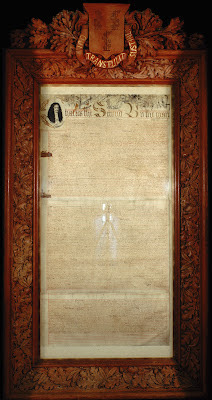 Rhode Island charter of 1663But in Rhode Island?
Rhode Island charter of 1663But in Rhode Island?How did William and Mary Dyer, or William and Anne Hutchinson, or all their colleagues, friends, and family celebrate religious holidays? They almost certainly did not. They came from a Puritan background in the 1620s and 1630s, when they emigrated from England to Massachusetts, which was a Puritan theocracy. They founded a secular democracy (a non-religious government) in Rhode Island in 1638, and though they were dissenters to Puritanism, their culture still did not include what they would have considered pagan or Catholic-origin celebrations. In the 1640s, the Rhode Island Assembly, to which William Dyer was secretary and recorder, met on December 25 to conduct quarterly business. There was no mention of a holiday���it was just another winter day on which to conduct colonial business.
Holy-day celebrations were restored in 1660, when King Charles II was restored to the throne of Great Britain and the colonies, the Anglican church and its Book of Common Prayer were accepted once more, and soon after, Rhode Island was given its religious liberty in a new charter obtained from King Charles. Along with their permission to worship (or not) as their conscience dictated, there was a flowering of religious traditions: Anglican, Congregational, Presbyterian, Lutheran, Quaker, Baptist, Antinomian, and soon, Methodism and the many denominations of the 19th century.
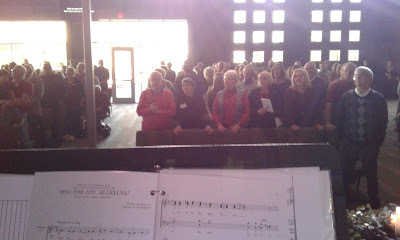 It would take many years for the stigma of paganism or Roman Catholicism to be cast off of Christmas and Easter. Even in the 1970s, when I was a teenager, my denomination, which originated in New England, frowned upon Christmas trees and decorations in churches and homes, because of pagan origins that had been adopted by other Christian denominations. We had Christmas hymns in the hymnals, and choral performances of Handel���s Messiah because of its biblical libretto, but choir anthems were few.
It would take many years for the stigma of paganism or Roman Catholicism to be cast off of Christmas and Easter. Even in the 1970s, when I was a teenager, my denomination, which originated in New England, frowned upon Christmas trees and decorations in churches and homes, because of pagan origins that had been adopted by other Christian denominations. We had Christmas hymns in the hymnals, and choral performances of Handel���s Messiah because of its biblical libretto, but choir anthems were few. It���s only been in the last few decades that Christmas has been embraced by most denominations as a family occasion where the gospel can be presented to non-believers.
Whatever your traditions and beliefs are, religious or secular, I wish for you peace, joy, health, and fulfilling relationships in the year to come.
And now for a little Quaker humor in honor of Mary Barrett Dyer:
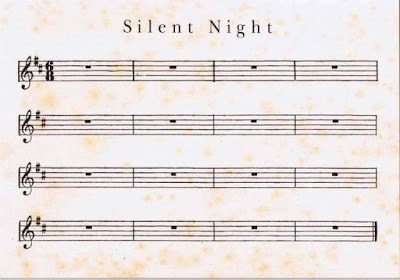
shortened link for this article: http://bit.ly/2SpKobX
*****
 Christy K Robinson is author of these books (click the colored title):
We Shall Be Changed
(2010)
Mary Dyer Illuminated
Vol. 1 (2013)
Mary Dyer: For Such a Time as This
Vol. 2 (2014)
The Dyers of London, Boston, & Newport
Vol. 3 (2014)
Effigy Hunter
(2015)
Anne Marbury Hutchinson: American Founding Mother
(2018)
Christy K Robinson is author of these books (click the colored title):
We Shall Be Changed
(2010)
Mary Dyer Illuminated
Vol. 1 (2013)
Mary Dyer: For Such a Time as This
Vol. 2 (2014)
The Dyers of London, Boston, & Newport
Vol. 3 (2014)
Effigy Hunter
(2015)
Anne Marbury Hutchinson: American Founding Mother
(2018)And of these sites: Discovering Love (inspiration and service)Rooting for Ancestors (history and genealogy)William and Mary Barrett Dyer(17th century culture and history of England and New England)Editornado [ed���i���tohr���NAY���doh] (Words. Communications. Book reviews. Cartoons.)
Published on December 22, 2019 00:42
“Purifying” the customs and fun of Christmas
Why our ancestors didn’t celebrate the holiday
© 2019 Christy K Robinson
Even as I finish out my 50th year as a church musician, playing keyboards for church preludes and choir parties, and accompanying vocalists and congregations during Advent and Christmas, I remember how our ancestors responded to holiday events in the 17th century.
 Brueghel the Younger: Adoration of the Magi, late 16th century.For a thousand years, European ancestors had celebrated Christ’s “birth” at midwinter with religious services, fasts and feasts (Advent was a four-week modified fast leading up to the Christmas feast and then 12 days of feasts and parties). It was during the religiously stringent mid-17th century that Christmas took a punch to the gut in Protestant England and New England.
Brueghel the Younger: Adoration of the Magi, late 16th century.For a thousand years, European ancestors had celebrated Christ’s “birth” at midwinter with religious services, fasts and feasts (Advent was a four-week modified fast leading up to the Christmas feast and then 12 days of feasts and parties). It was during the religiously stringent mid-17th century that Christmas took a punch to the gut in Protestant England and New England.The Christian church had adopted many pagan seasonal customs and co-opted their celebrations while proselytizing and building their culture and governments. The Yule, the holly and mistletoe, gift-giving, festivals of light and feasting, saint miracles, and much more originated thousands of years ago. But as Puritans, Separatists, and other non-conformists saw it, the “Christ-mass” was a bastardization of pagan revels with Roman Catholicism. Puritans (a.k.a. Congregationalists) had a mission to purify and purge Christianity of its sinful ways and prepare people for the imminent second advent of Christ.
The banning of Christmas celebrations has often been attributed to Oliver Cromwell, Lord Protector of the English Commonwealth from 1553 to 1558. The Parliamentary bans, however, occurred while he was a general, fighting decisive battles in the first English Civil War.
 Cromwell didn't outlaw or ban Christmas,
Cromwell didn't outlaw or ban Christmas, but it makes a fun meme!1644, England “Whereas some doubts have been raised whether the next [regularly scheduled last Wednesday of every month] Fast shall be celebrated, because it falleth on the day which heretofore was usually called the feast of the Nativity of our Saviour [Christmas]. The Lords and Commons in Parliament assembled doe order and ordaine that publique notice be given that the Fast appointed to be kept on the last Wednesday in every moneth ought to be observed untill it be otherwise ordered by both Houses of Parliament: And that this day in particular is to be kept with the more solemne humiliation, because it may call to remembrance our sinnes, and the sinnes of our forefathers, who have turned this Feast, pretending the memory of Christ into an extreame forgetfulnesse of him, by giving liberty to carnall and sensuall delights, being contrary to the life which Christ himselfe led here upon earth, and to the spirituall life of Christ in our soules for the sanctifying and saving whereof Christ was pleased both to take a humane life, and to lay it down againe.”
1647, England and Wales “All Festivals and Holy Days abolished; … Forasmuch as the Feasts of the Nativity of Christ, Easter and Whitsuntide [Pentecost], and other Festivals commonly called Holy-Dayes, have been heretofore superstitiously used and observed Be it Ordained, by the Lords and Commons in Parliament assembled, That the said Feast of the Nativity of Christ, Easter and Whitsuntide, and all other Festival dayes, commonly called Holy-dayes, be no longer observed as Festivals or Holy-dayes within this Kingdome of England and Dominion of Wales, any Law, Statute, Custome, Constitution, or Cannon to the contrary in any wise notwithstanding[.] “Source: Library of Congress
New England Separatists (Pilgrims) and Puritans were more zealous, more fundamentalist, more strict than their friends and brethren in England. Christmas was not celebrated in Plymouth Colony in 1621, as noted in my article HERE, and celebrations were much-frowned-upon by the theocracies of Massachusetts Bay, Connecticut, and New Haven in the 1630s and 1640s even while under the authority of King Charles I. As in England, people were encouraged to tattle on their neighbors who brought greenery into the house or held a Christmas feast or gave gifts.
1651, Massachusetts Bay ColonyWhen it comes to assigning “blame” for the banning of Christmas celebrations in New England, we could choose among several members of the theocratic government: Rev. John Cotton, Rev. John Wilson, Gov. Richard Bellingham, Sec. Edward Rawson, or Gov. John Endecott (Endecott is my suggestion for instigator because of his fanatical leanings, and his persecution of Baptists, Quakers, and others who would not conform to his narrow beliefs).
 Source:
The Charters and General Laws of the Colony and Province of Massachusetts.
Source:
The Charters and General Laws of the Colony and Province of Massachusetts.
 Satanical practices! Woe, woe!
Satanical practices! Woe, woe!The ordinance about Christmas is invariably listed between ordinances on gaming, dicing, and games of chance (bad, very bad!), so it might be reasonable to assume that one of the chief detractions of Christmas observance was not going to labor, not praying at home, and instead, getting intoxicated and gambling at the ordinaries. Ordinaries were licensed to sell beer and entertain travelers, and sometimes served as a community meetinghouse while church buildings were constructed. Gambling there was punishable by the same 5-shilling fine as celebrating Christmas.
Were they dour and austere all the time? As I researched history and sociology for my own books, I saw that Puritans had fun, drank alcohol (not to drunkenness), danced (not mixed sexes), had competitions like shooting and sword play, cooking and needlework, top skills or speed in building and construction, etc. They had after-church potlucks particularly for the people who had come to the city from smaller towns. They held concerts. They held harvest festivals and spring planting parties, and when they slaughtered their stock in November, that was hard work in smoking/cooking/drying the meat, as well as preserving the hides and using the bones and tallow—followed by food and music. They had wedding celebrations. They did like to party, but it was always with a religious, moral aspect to it because that was a shared belief.
 Rhode Island charter of 1663But in Rhode Island?
Rhode Island charter of 1663But in Rhode Island?How did William and Mary Dyer, or William and Anne Hutchinson, or all their colleagues, friends, and family celebrate religious holidays? They almost certainly did not. They came from a Puritan background in the 1620s and 1630s, when they emigrated from England to Massachusetts, which was a Puritan theocracy. They founded a secular democracy (a non-religious government) in Rhode Island in 1638, and though they were dissenters to Puritanism, their culture still did not include what they would have considered pagan or Catholic-origin celebrations. In the 1640s, the Rhode Island Assembly, to which William Dyer was secretary and recorder, met on December 25 to conduct quarterly business. There was no mention of a holiday—it was just another winter day on which to conduct colonial business.
Holy-day celebrations were restored in 1660, when King Charles II was restored to the throne of Great Britain and the colonies, the Anglican church and its Book of Common Prayer were accepted once more, and soon after, Rhode Island was given its religious liberty in a new charter obtained from King Charles. Along with their permission to worship (or not) as their conscience dictated, there was a flowering of religious traditions: Anglican, Congregational, Presbyterian, Lutheran, Quaker, Baptist, Antinomian, and soon, Methodism and the many denominations of the 19th century.
 It would take many years for the stigma of paganism or Roman Catholicism to be cast off of Christmas and Easter. Even in the 1970s, when I was a teenager, my denomination, which originated in New England, frowned upon Christmas trees and decorations in churches and homes, because of pagan origins that had been adopted by other Christian denominations. We had Christmas hymns in the hymnals, and choral performances of Handel’s Messiah because of its biblical libretto, but choir anthems were few.
It would take many years for the stigma of paganism or Roman Catholicism to be cast off of Christmas and Easter. Even in the 1970s, when I was a teenager, my denomination, which originated in New England, frowned upon Christmas trees and decorations in churches and homes, because of pagan origins that had been adopted by other Christian denominations. We had Christmas hymns in the hymnals, and choral performances of Handel’s Messiah because of its biblical libretto, but choir anthems were few. It’s only been in the last few decades that Christmas has been embraced by most denominations as a family occasion where the gospel can be presented to non-believers.
Whatever your traditions and beliefs are, religious or secular, I wish for you peace, joy, health, and fulfilling relationships in the year to come.
shortened link for this article: http://bit.ly/2SpKobX
*****
 Christy K Robinson is author of these books (click the colored title):
We Shall Be Changed
(2010)
Mary Dyer Illuminated
Vol. 1 (2013)
Mary Dyer: For Such a Time as This
Vol. 2 (2014)
The Dyers of London, Boston, & Newport
Vol. 3 (2014)
Effigy Hunter
(2015)
Anne Marbury Hutchinson: American Founding Mother
(2018)
Christy K Robinson is author of these books (click the colored title):
We Shall Be Changed
(2010)
Mary Dyer Illuminated
Vol. 1 (2013)
Mary Dyer: For Such a Time as This
Vol. 2 (2014)
The Dyers of London, Boston, & Newport
Vol. 3 (2014)
Effigy Hunter
(2015)
Anne Marbury Hutchinson: American Founding Mother
(2018)And of these sites: Discovering Love (inspiration and service)Rooting for Ancestors (history and genealogy)William and Mary Barrett Dyer(17th century culture and history of England and New England)Editornado [ed•i•tohr•NAY•doh] (Words. Communications. Book reviews. Cartoons.)
Published on December 22, 2019 00:42
December 9, 2019
Anne Marbury Hutchinson's church at Alford
Anne Marbury (m. William Hutchinson of Alford) is the ancestor of millions of people over the last 400 years. She's also a pioneer of religious liberty in America, which makes her an honored "founding mother" to much of Western society.
Her father, Francis Marbury, was vicar of Alford's St. Wilfrid church in the late 1500s, and when he was silenced for his non-conforming preaching, he taught school to the boys of Alford. His daughters were educated at home, and Anne was the recipient of his teachings in justice, logic, and spiritual matters, which she carried with her in the Bible classes she led in England, on the ship Griffin in 1634, and in New England. She defended herself in two trials: the first for sedition in the autumn of 1637, and the second in March 1638 for heresy. Anne Hutchinson was the catalyst for a large group of families who left Massachusetts Bay Colony and founded a new, civil body politick (a secular government) in Rhode Island.
Two Facebook friends of mine, Dr. Adrian Gray, and Rev. Ros Latham, have provided photos of the church and schoolroom at Alford.
 Inside the old school room above the church porch at Alford. It is claimed that Captain John Smith of Virginia fame spent part of his education here, possibly in the care of Francis Marbury - who was the father of the very famous (in America) Anne Hutchinson, whose radical religious views caused some chaos in Massachusetts. Anne certainly benefited from her father's education and was unusually well educated for a woman of her day....hence the trouble!
Inside the old school room above the church porch at Alford. It is claimed that Captain John Smith of Virginia fame spent part of his education here, possibly in the care of Francis Marbury - who was the father of the very famous (in America) Anne Hutchinson, whose radical religious views caused some chaos in Massachusetts. Anne certainly benefited from her father's education and was unusually well educated for a woman of her day....hence the trouble!
Photo and caption by Adrian Gray, a Cambridge University historian, author, and manager of
Pilgrims and Prophets Heritage Tours.
St. Wilfrid church is the center of the community in Alford, Lincolnshire, where Anne and William Hutchinson baptized their large brood of children, and where three of their children were buried. Many other Marbury and Hutchinson relatives lived and died at Alford over several generations.
Church photos by Rev. Ros Latham, Priest in Charge, Alford group of churches.
 St Wilfrid Church of England, south face of the church in Alford, Lincolnshire. The classroom is located over the south door at the center of the photo.
St Wilfrid Church of England, south face of the church in Alford, Lincolnshire. The classroom is located over the south door at the center of the photo.
 The south porch and entrance door to St. Wilfrid's, with the classroom over the arch.
The south porch and entrance door to St. Wilfrid's, with the classroom over the arch.
The south and west windows would have provided light for reading and writing.
"The C16 gabled south porch is surmounted by a parvise room. [Parvise is derived from "paradise" and means the space outside and around a church, particularly a room over a church porch.]
It has moulded plinth, stepped corner buttresses, moulded parapet with pinnacles. The continuously moulded outer arch is 4 centred with moulded hood. The upper chamber is lit by single 3 light windows to the south and west, both with deep chamfered reveals. In the porch is a cambered doorway in the west wall leading to the parvise. The inner south doorway has engaged angle shafts with floriate capitals and a filleted roll moulded head, moulded hood with C19 stops. The door is contemporary with a design of panel tracery to the upper part, and an ogee headed wicket with early lock plate and latch."
Source: https://historicengland.org.uk/listing/the-list/list-entry/1063026
 Church interior, facing east into the chancel, which was built starting in about 1289AD.
Church interior, facing east into the chancel, which was built starting in about 1289AD.
It would be fascinating to know who was buried beneath the tiles of this church, and how many
thousands of people were buried in the churchyard during various waves of plagues and epidemics.
 Learn more about Anne Hutchinson's extraordinary life and legacy
Learn more about Anne Hutchinson's extraordinary life and legacy
in this contemporary biography by Christy K Robinson.
Click this link to the book at Amazon:
Anne Marbury Hutchinson: American Founding Mother
Her father, Francis Marbury, was vicar of Alford's St. Wilfrid church in the late 1500s, and when he was silenced for his non-conforming preaching, he taught school to the boys of Alford. His daughters were educated at home, and Anne was the recipient of his teachings in justice, logic, and spiritual matters, which she carried with her in the Bible classes she led in England, on the ship Griffin in 1634, and in New England. She defended herself in two trials: the first for sedition in the autumn of 1637, and the second in March 1638 for heresy. Anne Hutchinson was the catalyst for a large group of families who left Massachusetts Bay Colony and founded a new, civil body politick (a secular government) in Rhode Island.
Two Facebook friends of mine, Dr. Adrian Gray, and Rev. Ros Latham, have provided photos of the church and schoolroom at Alford.
 Inside the old school room above the church porch at Alford. It is claimed that Captain John Smith of Virginia fame spent part of his education here, possibly in the care of Francis Marbury - who was the father of the very famous (in America) Anne Hutchinson, whose radical religious views caused some chaos in Massachusetts. Anne certainly benefited from her father's education and was unusually well educated for a woman of her day....hence the trouble!
Inside the old school room above the church porch at Alford. It is claimed that Captain John Smith of Virginia fame spent part of his education here, possibly in the care of Francis Marbury - who was the father of the very famous (in America) Anne Hutchinson, whose radical religious views caused some chaos in Massachusetts. Anne certainly benefited from her father's education and was unusually well educated for a woman of her day....hence the trouble!Photo and caption by Adrian Gray, a Cambridge University historian, author, and manager of
Pilgrims and Prophets Heritage Tours.
St. Wilfrid church is the center of the community in Alford, Lincolnshire, where Anne and William Hutchinson baptized their large brood of children, and where three of their children were buried. Many other Marbury and Hutchinson relatives lived and died at Alford over several generations.
Church photos by Rev. Ros Latham, Priest in Charge, Alford group of churches.
 St Wilfrid Church of England, south face of the church in Alford, Lincolnshire. The classroom is located over the south door at the center of the photo.
St Wilfrid Church of England, south face of the church in Alford, Lincolnshire. The classroom is located over the south door at the center of the photo. The south porch and entrance door to St. Wilfrid's, with the classroom over the arch.
The south porch and entrance door to St. Wilfrid's, with the classroom over the arch. The south and west windows would have provided light for reading and writing.
"The C16 gabled south porch is surmounted by a parvise room. [Parvise is derived from "paradise" and means the space outside and around a church, particularly a room over a church porch.]
It has moulded plinth, stepped corner buttresses, moulded parapet with pinnacles. The continuously moulded outer arch is 4 centred with moulded hood. The upper chamber is lit by single 3 light windows to the south and west, both with deep chamfered reveals. In the porch is a cambered doorway in the west wall leading to the parvise. The inner south doorway has engaged angle shafts with floriate capitals and a filleted roll moulded head, moulded hood with C19 stops. The door is contemporary with a design of panel tracery to the upper part, and an ogee headed wicket with early lock plate and latch."
Source: https://historicengland.org.uk/listing/the-list/list-entry/1063026
 Church interior, facing east into the chancel, which was built starting in about 1289AD.
Church interior, facing east into the chancel, which was built starting in about 1289AD.It would be fascinating to know who was buried beneath the tiles of this church, and how many
thousands of people were buried in the churchyard during various waves of plagues and epidemics.
 Learn more about Anne Hutchinson's extraordinary life and legacy
Learn more about Anne Hutchinson's extraordinary life and legacy in this contemporary biography by Christy K Robinson.
Click this link to the book at Amazon:
Anne Marbury Hutchinson: American Founding Mother
Published on December 09, 2019 22:23
November 26, 2019
Breaking News! Author hawks own books for holidays!
This week, we have Black Friday, Small Business Saturday, and Cyber Monday in addition to Thanksgiving.
You know that I've written four books on the Dyers and Hutchinsons, and that I regularly post up-to-date research in my history websites that have enlightened you about the lives of those families, as well as their friends, foes, and culture.
If you've already read the five-star-reviewed books, may I ask that you purchase copies for your relatives and friends as gifts? They're available on Amazon at <https://bit.ly/RobinsonAuthor>
Thank you for your support, which is much appreciated--and much needed.




You know that I've written four books on the Dyers and Hutchinsons, and that I regularly post up-to-date research in my history websites that have enlightened you about the lives of those families, as well as their friends, foes, and culture.
If you've already read the five-star-reviewed books, may I ask that you purchase copies for your relatives and friends as gifts? They're available on Amazon at <https://bit.ly/RobinsonAuthor>
Thank you for your support, which is much appreciated--and much needed.




Published on November 26, 2019 21:17
November 4, 2019
#OnThisDay in 1605: The Gunpowder Plot
© 2019 Christy K Robinson
William Dyer and his father by the same name had nothing to do with the Gunpowder Plot discovered on 5 November 1605. Indeed, William the son would not be born for another four years, and William the father was a young farmer whose first son would be born in 1607 in the village of Kirkby LaThorpe, Lincolnshire, located 100 miles north of all the action in London.
If you're a descendant of William and Anne Marbury Hutchinson, they would have been teenagers living in London, and would have witnessed the civic unrest with their own eyes.
Mary Barrett (later Dyer) and Katherine Marbury (later Scott), born in 1610 or 1611, and would have also witnessed the celebrations on the 5th of November as they grew up in London.
 The conspirators of the Gunpowder Plot in 1605, from a contemporary artist. But there are a few things we can learn about the culture from the story of
Guy Fawkes and the Gunpowder Plot
to kill King James I and many members of Parliament, that relate to the Dyers. Guy Falkes was one of the conspirators in the plot, but not the ringleader. But his name has become the most famous over the past four centuries because of his confession given under torture, the hideous traitor's execution denied to the huge crowd by his last-minute suicidal leap from the platform, and the celebratory bonfire night that bears his name.
The conspirators of the Gunpowder Plot in 1605, from a contemporary artist. But there are a few things we can learn about the culture from the story of
Guy Fawkes and the Gunpowder Plot
to kill King James I and many members of Parliament, that relate to the Dyers. Guy Falkes was one of the conspirators in the plot, but not the ringleader. But his name has become the most famous over the past four centuries because of his confession given under torture, the hideous traitor's execution denied to the huge crowd by his last-minute suicidal leap from the platform, and the celebratory bonfire night that bears his name.
Fashions
Notice in the image above how all of the conspirators appeared: a tall hat with a floppy brim, large collars and multiple layers of heavy fabrics, and every man had a short, narrow beard (a goatee), a mustache, and hair that covered their ears and reached down to the their collars. I don't know if the artist drew from life, or if the faces were his own conception, but I suspect the latter. The treasonous conspirators all have a sharp weasel profile! But in clothing and hairstyle, the elder William Dyer surely would have appeared much as those men did.
 King Henry VIII, and his children who became monarchs: Edward VI, Mary I, and Elizabeth I.
King Henry VIII, and his children who became monarchs: Edward VI, Mary I, and Elizabeth I.
Religious strife
After decades of religious upheaval under King Henry VIII, his son Edward VI, daughters Mary I and Elizabeth I, and now King James I, England had been torn to bits. On top of that, James had recently published the book Daemonologie that told how to identify witches and related them to Roman Catholic believers. The Gunpowder Plot was planned to kill King James and his family, and put his Catholic-leaning daughter on the throne instead.
Nominally, the churches of England were Anglican, but the Separatists that included those who would become the Pilgrims (who moved first to the Netherlands and then to Plymouth, Massachusetts), and those who wanted to purify the Anglican Church of Catholic practices, who were called Puritans. My research indicates that William Dyer the younger was probably educated at what is now called Carre's Grammar School in Sleaford, several miles from his home. The school's charter called for teachers and a headmaster who had been educated at Oxford or Cambridge, in the Church of England tradition. But the church of St. Denys in Kirkby LaThorpe may have had a Puritan-leaning minister.
Climate change in the first decade of the 17th century
All over the world, the climate was cooling rapidly, but even more quickly in the first decade of the 1600s because of volcanic ash in South America. It happened in the middle of the Little Ice Age that ran from the 1300s to the late 1700s. Millions of people died in Russia, Europe, England, China, Africa, and elsewhere because of crop failure and famine which left people and animals weakened and susceptible to plagues that included the Black Death, diphtheria, smallpox, cholera, and dysentery. The odds were that William Dyer's crops were probably blighted by cold temperatures and flooded (or frozen) fens, and many of his domestic stock would have been slaughtered because they were too expensive to feed or keep warm in winter. On the other hand, country people usually fared better than those in towns and cities because they had better access to food and fuel.
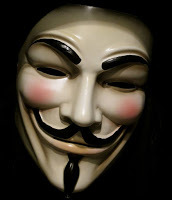 https://www.nationalgeographic.org/th...Guy Fawkes and Bonfire Night
https://www.nationalgeographic.org/th...Guy Fawkes and Bonfire Night
On 5 November 1605, Londoners were encouraged to celebrate the King's escape from assassination by lighting bonfires, provided that "this testemonye of joy be carefull done without any danger or disorder." An Act of Parliament designated each 5th of November as a day of thanksgiving for "the joyful day of deliverance."
The Act required church ministers to hold a special service of Thanksgiving annually on 5 November, during which the text of the Act was to be read out loud. Everyone was required to attend, and to remain orderly throughout the service, although no penalties were prescribed for breach.
And that is what we know that William Dyer, both father and son--and all their countrymen in old England and new--would have heard and experienced from November 5, 1606, to the ends of their lives.
So there you have it: a slice-of-life for our English ancestors of the 17th century.
*****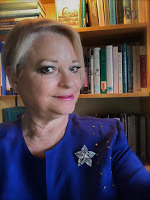
Christy K Robinson is author of these books (click the colored title): We Shall Be Changed (2010) Mary Dyer Illuminated Vol. 1 (2013) Mary Dyer: For Such a Time as This Vol. 2 (2014) The Dyers of London, Boston, & Newport Vol. 3 (2014) Effigy Hunter (2015) Anne Marbury Hutchinson: American Founding Mother (2018)
And of these sites: Discovering Love (inspiration and service)Rooting for Ancestors (history and genealogy)William and Mary Barrett Dyer(17th century culture and history of England and New England)Editornado [ed•i•tohr•NAY•doh] (Words. Communications. Book reviews. Cartoons.)
William Dyer and his father by the same name had nothing to do with the Gunpowder Plot discovered on 5 November 1605. Indeed, William the son would not be born for another four years, and William the father was a young farmer whose first son would be born in 1607 in the village of Kirkby LaThorpe, Lincolnshire, located 100 miles north of all the action in London.
If you're a descendant of William and Anne Marbury Hutchinson, they would have been teenagers living in London, and would have witnessed the civic unrest with their own eyes.
Mary Barrett (later Dyer) and Katherine Marbury (later Scott), born in 1610 or 1611, and would have also witnessed the celebrations on the 5th of November as they grew up in London.
 The conspirators of the Gunpowder Plot in 1605, from a contemporary artist. But there are a few things we can learn about the culture from the story of
Guy Fawkes and the Gunpowder Plot
to kill King James I and many members of Parliament, that relate to the Dyers. Guy Falkes was one of the conspirators in the plot, but not the ringleader. But his name has become the most famous over the past four centuries because of his confession given under torture, the hideous traitor's execution denied to the huge crowd by his last-minute suicidal leap from the platform, and the celebratory bonfire night that bears his name.
The conspirators of the Gunpowder Plot in 1605, from a contemporary artist. But there are a few things we can learn about the culture from the story of
Guy Fawkes and the Gunpowder Plot
to kill King James I and many members of Parliament, that relate to the Dyers. Guy Falkes was one of the conspirators in the plot, but not the ringleader. But his name has become the most famous over the past four centuries because of his confession given under torture, the hideous traitor's execution denied to the huge crowd by his last-minute suicidal leap from the platform, and the celebratory bonfire night that bears his name.Fashions
Notice in the image above how all of the conspirators appeared: a tall hat with a floppy brim, large collars and multiple layers of heavy fabrics, and every man had a short, narrow beard (a goatee), a mustache, and hair that covered their ears and reached down to the their collars. I don't know if the artist drew from life, or if the faces were his own conception, but I suspect the latter. The treasonous conspirators all have a sharp weasel profile! But in clothing and hairstyle, the elder William Dyer surely would have appeared much as those men did.
 King Henry VIII, and his children who became monarchs: Edward VI, Mary I, and Elizabeth I.
King Henry VIII, and his children who became monarchs: Edward VI, Mary I, and Elizabeth I.Religious strife
After decades of religious upheaval under King Henry VIII, his son Edward VI, daughters Mary I and Elizabeth I, and now King James I, England had been torn to bits. On top of that, James had recently published the book Daemonologie that told how to identify witches and related them to Roman Catholic believers. The Gunpowder Plot was planned to kill King James and his family, and put his Catholic-leaning daughter on the throne instead.
Nominally, the churches of England were Anglican, but the Separatists that included those who would become the Pilgrims (who moved first to the Netherlands and then to Plymouth, Massachusetts), and those who wanted to purify the Anglican Church of Catholic practices, who were called Puritans. My research indicates that William Dyer the younger was probably educated at what is now called Carre's Grammar School in Sleaford, several miles from his home. The school's charter called for teachers and a headmaster who had been educated at Oxford or Cambridge, in the Church of England tradition. But the church of St. Denys in Kirkby LaThorpe may have had a Puritan-leaning minister.
Climate change in the first decade of the 17th century
All over the world, the climate was cooling rapidly, but even more quickly in the first decade of the 1600s because of volcanic ash in South America. It happened in the middle of the Little Ice Age that ran from the 1300s to the late 1700s. Millions of people died in Russia, Europe, England, China, Africa, and elsewhere because of crop failure and famine which left people and animals weakened and susceptible to plagues that included the Black Death, diphtheria, smallpox, cholera, and dysentery. The odds were that William Dyer's crops were probably blighted by cold temperatures and flooded (or frozen) fens, and many of his domestic stock would have been slaughtered because they were too expensive to feed or keep warm in winter. On the other hand, country people usually fared better than those in towns and cities because they had better access to food and fuel.
 https://www.nationalgeographic.org/th...Guy Fawkes and Bonfire Night
https://www.nationalgeographic.org/th...Guy Fawkes and Bonfire NightOn 5 November 1605, Londoners were encouraged to celebrate the King's escape from assassination by lighting bonfires, provided that "this testemonye of joy be carefull done without any danger or disorder." An Act of Parliament designated each 5th of November as a day of thanksgiving for "the joyful day of deliverance."
The Act required church ministers to hold a special service of Thanksgiving annually on 5 November, during which the text of the Act was to be read out loud. Everyone was required to attend, and to remain orderly throughout the service, although no penalties were prescribed for breach.
"Many malignant and devilish Papists, Jesuits, and Seminary Priests, much envying and fearing, conspired most horribly, when the King's most excellent Majesty, the Queen, the Prince, and the Lords Spiritual and Temporal, and Commons, should have been assembled in the Upper House of Parliament upon the Fifth Day of November in the Year of our Lord One thousand six hundred and five, suddenly to have blown up the said whole House with Gunpowder : An Invention so inhuman, barbarous and cruel, as the like was never before heard of... where sundry necessary and religious Laws for Preservation of the Church and State were made, which they falsely and slanderously term Cruel Laws, enacted against them and their Religion, both Places and Persons should all be destroyed and blown up at once; which would have turned to the utter Ruin of this whole Kingdom, had it not pleased Almighty God, by inspiring the King's most excellent Majesty with a Divine Spirit, to interpret some dark Phrases of a Letter showed to his Majesty, above and beyond ordinary Construction, thereby miraculously discovering this hidden Treason not many Hours before the appointed Time for the Execution thereof."The face mask we've often seen as a symbol of anarchy, resistance to authority, and political hackers is a depiction of Guy Fawkes. In England, the celebration of Bonfire Night is a civic holiday, with fireworks, and the burning of an effigy of Guy Fawkes on the bonfire. Toasted marshmallows and sausages cooked campfire-style are traditional foods.
And that is what we know that William Dyer, both father and son--and all their countrymen in old England and new--would have heard and experienced from November 5, 1606, to the ends of their lives.
So there you have it: a slice-of-life for our English ancestors of the 17th century.
*****

Christy K Robinson is author of these books (click the colored title): We Shall Be Changed (2010) Mary Dyer Illuminated Vol. 1 (2013) Mary Dyer: For Such a Time as This Vol. 2 (2014) The Dyers of London, Boston, & Newport Vol. 3 (2014) Effigy Hunter (2015) Anne Marbury Hutchinson: American Founding Mother (2018)
And of these sites: Discovering Love (inspiration and service)Rooting for Ancestors (history and genealogy)William and Mary Barrett Dyer(17th century culture and history of England and New England)Editornado [ed•i•tohr•NAY•doh] (Words. Communications. Book reviews. Cartoons.)
Published on November 04, 2019 23:00
October 27, 2019
#OnThisDay, 27 Oct 1659, Mary Dyer’s friends were hanged
© 2019 Christy K Robinson
Perhaps because Mary Dyer had countless descendants in North America, her sacrifice for religious liberty is better known than the Quakers who were hanged as she stood nearby with a noose around her neck. Even in this website that features the friends and enemies and culture surrounding William and Mary Dyer, there’s been scant mention of the two innocent young men who went to the gallows on Oct. 27, 1659.
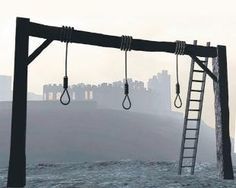 Photo: Lancashire Telegraph
Photo: Lancashire TelegraphWilliam Robinsonwas a London merchant, a young man of education, successful in his affairs, and possessed of a fine and lofty spirit, ready to endure to the death for his soul’s vision of truth. Died by hanging with Yorkshire plowman, Marmaduke Stephenson, October 27, 1659, at Boston. Robinson had been one of the first Quaker missionaries to come to America, having sailed on the Woodhousein 1657 with at least 11 or 12 others, for the purpose of evangelizing the American colonies. As you see from his letter below, he traveled and preached in Virginia and Maryland before focusing efforts on the zealously Puritan New England.
While a prisoner in Boston’s “common jail,” William Robinson wrote a letter to George Fox, founder of the Quaker movement, in England. The letter was dated 12 July 1659.
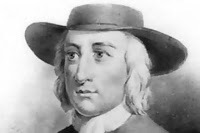 George Fox, Quaker founder, as a
George Fox, Quaker founder, as ayoung man.
FROM WILLIAM ROBINSON TO GEORGE FOX G. F. Oh! beloved of God, and highly honored and esteemed among the children of the Lord, who has made you a father unto thousands; and has given you the spirit of wisdom and of understanding. I was refreshed when I was constrained to write, to give you an account of our travels and labors in these countries. I who am one of the least among my brethren, having been for some time in Virginia with Robert Hodgson and Christopher Holder, where there are many people convinced; and some that are brought into the sense and feeling of Truth in several places. We left Thomas Thurston a prisoner in a place called Maryland; his sentence was to be kept a year and a day.
We came lately to Rhode Island where we met with two of our brethren, named Peter Pearson and Marmaduke Stevenson, in whom we were refreshed. Friends on the island were glad to see us, and the honest-hearted were refreshed.
Peter Pearson and one William Leddra, are prisoners in this country, at a town called Plymouth, as I did understand by a letter I received from my brother Christopher Holder, who was in service at a town called Salem, last week, some fifteen miles from Boston, where I am now a prisoner, (with my brother Marmaduke Stevenson) for the testimony of Jesus.
Soon after I came to Rhode Island, the Lord commanded me to pass to Boston, to bear my testimony against their persecution and to try their bloody law which they have made, with laying down of my life, if they have power to take it from me. For truly I am given up in my spirit into the hand of the Lord to do with me as He sees fit; for verily, my life is laid down, and my spirit is freely given up for the service of God, where he has called me.
The rulers, priests, and people, boast much in their hearts, that they have caused some to flee, for they have banished six Friends upon threat of death from their outward homes, which was at Salem, and they have stooped to them in fleeing the cross in their departures. Three of them have gone towards Barbados, and intend for England, it may be for London, whose names are Samuel Shattock, Nicholas Phelps, and Josiah Southwick; Josiah's father and mother [Lawrence and Cassandra Southwick] are passed to a place called Shelter Island, which belongs to a Friend, one Nathaniel Silvester, who is a fine, noble man; and the other of the six have gone to Rhode Island.
Oh! God knows how near this went to me, when I heard that they had departed, and the Lord soon laid it upon me to try their law; yes, on the same day that I heard of their departure was I constrained, and soon made willing to give up my life in order to try Boston's bloody laws. I was given up frequently in my spirit into the Lord's will, even to finish my testimony for the Lord, against the town of Boston. I was not aware of any Friend to go with me at that time, but the Lord had compassion on me, seeing how willingly I was given up to do his will, not counting my life dear to me, so that I might finish my course with joy; and on the day following, the Lord constrained my brother, Marmaduke Stevenson, to go along with me to Boston, who is freely given up to suffer with me for the seed's sake, who does dearly salute you.
Oh! my dearly beloved, you who are endued with power from on High; who are of a quick discerning in the fear of our God; Oh! remember us—let your prayers be put up unto the Lord God for us, that his power and strength may rest with us and upon us; that, faithful, we may be preserved to the end. Amen.
William Robinson From the Common Jail in Boston, the 12th of the Fifth Mo. 1659 [12 July 1659].
Robinson wrote a paper to the Boston court which he was not allowed to read, though he left his paper on a table there. In a letter he wrote to his Quaker Friends, he said,
The streams of my Father's love run daily through me, from the Holy Fountain of Life, to the seed throughout the whole creation. I am overcome with love, for it is my life and length of my days; it is my glory and my daily strength.— "
I am full of the quickening power of the Lord Jesus Christ, and my lamp is filled with pure oil, so that it gives a clear light and pleasant smell; and I shall enter with my beloved into eternal rest and peace, and I shall depart with everlasting joy in my heart, and praises in my mouth, singing hallelujah unto the Lord, who has redeemed me by his living power from among kindreds, tongues, and nations. And now the day of my departure draws near. I have fought a good fight. I have kept the holy faith. I have near finished my course; my travailing is near at an end. My testimony is near to be finished, and an eternal crown is laid up for me, and for all whose feet are shod with righteousness, and the preparation of peace, even such whose names are written in the book of life, wherein I live and rejoice with all the faithful for evermore.
Written by a servant of Jesus Christ, William Robinson The 23rd of the Eighth Month (October 23], 1659.
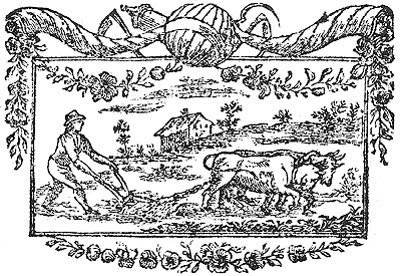
Marmaduke Stevensonwas a plowman from Shipton, Yorkshire, about five miles northwest of York. He became “convinced” of the Quaker ideology, and left his family (his “dear and loving wife and tender children”) to the care of the Lord. He followed the call to go first to Barbados in June 1658, and then to Massachusetts to share the Light. Only 16 months later, he would die on the Boston gallows, but joyfully, as an ordained “prophet to the nations.”
This is his “manifesto” letter, probably dictated to William Robinson in the Boston jail:
In the beginning of the year 1655, I was at the plough, in the east parts of Yorkshire, in Old England, near the place where my outward being was, and as I walked after the plough, I was filled with the love and presence of the living God, which did ravish my heart when I felt it; for it did increase and abound in me like a living stream, so did the love and life of God run through me like precious ointment, giving a pleasant smell, which made me to stand still; and as I stood a little still, with my heart and mind stayed on the Lord, the word of the Lord came to me in a still small voice, which I did hear perfectly, saying to me in the secret of my heart and conscience,—I have ordained you a prophet unto the nations.—And at the hearing of the word of the Lord, I was put to a stand, being that I was but a child for such a weighty matter.
So at the time appointed, Barbados was set before me, unto which I was required of the Lord to go, and leave my dear and loving wife, and tender children; for the Lord said unto me immediately by his Spirit, that he would be as a husband to my wife, and as a father to my children, and they should not want in my absence, for he would provide for them when I was gone. And I believed that the Lord would perform what he had spoken, because I was made willing to give up myself to his work and service, to leave all and follow him, whose presence and life is with me, where I rest in peace and quietness of spirit, (with my dear brother), under the shadow of his wings, who has made us willing to lay down our lives for his own name sake, if unmerciful men are allowed to take them from us; and if they do, we know we shall have peace and rest with the Lord forever in his holy habitation, when they shall have torment night and day. So, in obedience to the living God, I made preparation to pass to Barbados in the Fourth month [June], 1658.
So, after I bad been some time on the said island in the service of God, I heard that New England had made a law to put the servants of the living God to death, if they returned after they were sentenced away, which did come near me at that time; and as I considered the thing, and pondered it in my heart, immediately came the word of the Lord unto me, saying, “You know not but that you may go there." But I kept this word in my heart, and did not declare it to any until the time appointed.
So, after that, a vessel was made ready for Rhode Island, which I passed in. So, after a little time that I had been there, visiting the seed [other Quakers] which the Lord has blessed, the word of the Lord came unto me, saying, 'Go to Boston with your brother William Robinson.' And at his command I was obedient, and gave up myself to do his will, that so his work and service may be accomplished: for he has said unto me, that he has a great work for me to do; which is now come to pass. For yielding obedience to, and obeying the voice and command of, the ever-living God, who created heaven and earth, and the fountains of waters, do I, with my dear brother, suffer outward bonds unto our death.
And this is given forth to be upon record, that all people may know, who hear it, that we came not in our own wills, but in the will of God. Given forth by me, who am known to men by the name of
Marmaduke Stevenson, But having a new name given me, which the world knows not of, written in the Book of Life.Written in Boston prison, in the 8th Month [October], 1659.
By the words and tone of their letters, you can see that Robinson and Stevenson were kind and loving people, whose devotion to God and commitment to their cause (pushback against the theocratic laws about Quakers) was bone-deep. As is often the case, persecution brings about a sense of pity in on-lookers, and an examination of why the persecuted people are so willing to be flogged, fined, imprisoned, and even killed. The persecution of Quakers was driving interest in their faith and their ability to patiently endure suffering. See my article, They delight to be persecuted, in this site.
The day of the executionAccording to a Quaker prisoner, on the morning of Thursday, October 27, the execution day, a large crowd assembled at the prison where Robinson and Stevenson (and numerous other Quakers) were being held. Robinson preached through his barred window, encouraging Quakers and exhorting Puritans. Captain Oliver, in charge of public security, could not control the crowd outside, so he went inside the prison, yanked Robinson and Stevenson down, and threw them into a “hole,” presumably a tiny and remote dungeon cell. Mary Dyer was collected from the House of Correction, a separate prison from where many of the other Quakers were held. See my article, Boston's prison during the Dyer years.
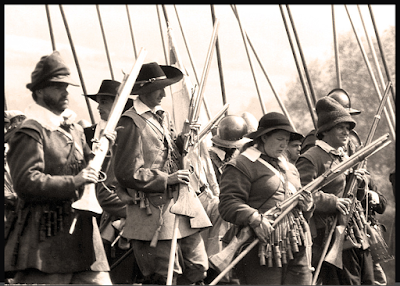 Pikes (long spears) and muskets.
Pikes (long spears) and muskets. Photo by Colin Howley on Flickr Licensing by Creative CommonsOnce order was restored, with more than a hundred pikemen and musketeers (militia with spears and muskets) guarding them, the three prisoners were marched over the rough ground of the Common (an animal pasture at the time—not a lovely park like it is today) because the streets were clogged with people who potentially could free the prisoners or harm the officials in a riot. They walked “with drums and colors, and halberds, guns, swords and pikes, besides many horsemen.'' (Interesting site about pike warfare HERE.)
Drums beat loudly to drown the voices of the Quakers as they walked the mile from the center of the town to the gallows at the narrow isthmus outside the Boston town gate. In a show of mutual support, Mary took the hands of Robinson and Stevenson as they walked, and she was reviled for it for it by the marshal.
"Are you not ashamed to walk thus between two young men?" (Mary was about 48 years old, and the young men were probably in their twenties.) "No,” answered Mary Dyer, "This is to me an hour of the greatest joy I ever had in this world. No ear can hear, no tongue can utter, and no heart can understand, the sweet incomes and the refreshments of the Spirit of the Lord, which I now feel."
 Notice the two posts and crossbeam gallows on the far left of the image.
Notice the two posts and crossbeam gallows on the far left of the image. That's the execution site outside the fortified gate to Boston, on Boston Neck.
Orange Street was the road between Boston and Roxbury.When the parade of militia, condemned prisoners, magistrates and ministers reached the gallows, Rev. John Wilson, senior minister of Boston First Church, taunted the Quakers, and by his words and actions there, almost danced with excitement. One historian noted that Wilson made a song about the two dead Quakers.
As many followers of this site know, Mary Dyer was reprieved of her death sentence after standing on the gallows ladder with her hands and feet bound and the noose on her neck, and she was returned to the jail.
Robinson’s and Stevenson’s bodies were cut down from the high crossbeam, and they fell to the ground below, where Robinson’s skull was fractured on impact. In the custom of the time, their bodies were stripped naked and they were thrown into a pit to decompose or be torn by animals or birds. One of the Quakers left back at the prison had brought fabric for shrouds, but this dignity was not afforded the hanged men. The land of Boston Neck being only a few feet above sea level and surrounded by marshes, the pit filled with tidewater, which hastened decomposition. The public display of their nude bodies was meant to be a warning and lesson to travelers who passed by, that sedition and heresy were not tolerated in the Holy City.
When the crowd of thousands returned to their homes after the grisly spectacle, they passed over a drawbridge to the north of Boston. I discovered in a court record that some months earlier, the infrastructure of roads and bridges was reported to be in dangerous condition, but the Boston magistrates refused to fund the repairs. Instead, they awarded land grants to some of their members. (Not to be too political, but this still happens today!)
On that day, October 27, as a large crowd of people were walking on the drawbridge, “one end of it fell upon some, and several were hurt, especially a wicked woman, who had reviled both Quakers that were hung; but now she was so bruised, that her flesh rotted from her bones, which made such a noisome stink, that people could not endure to be with her; in which miserable condition she remained till she died. But the magistrates, instead of taking notice of this, grew more hardened.”
*****
 Christy K Robinson, wearing a scarf
Christy K Robinson, wearing a scarfshe had made from an image of
of Mary Dyer's handwriting
from Oct. 26, 1659.Christy K Robinson is author of these books (click the colored title): We Shall Be Changed (2010) Mary Dyer Illuminated Vol. 1 (2013) Mary Dyer: For Such a Time as This Vol. 2 (2014) The Dyers of London, Boston, & Newport Vol. 3 (2014) Effigy Hunter (2015) Anne Marbury Hutchinson: American Founding Mother (2018)
And of these sites: Discovering Love (inspiration and service)Rooting for Ancestors (history and genealogy)William and Mary Barrett Dyer(17th century culture and history of England and New England)Editornado [ed•i•tohr•NAY•doh] (Words. Communications. Book reviews. Cartoons.)
Published on October 27, 2019 00:00
October 22, 2019
Video--Mary Dyer's letter of October 26, 1659
© 2019 Christy K Robinson
The episode where I record my first video for the Dyer website.
On the 26th of October, 1659, Mary Barrett Dyer was kept in solitary confinement in a Boston prison cell, condemned to die by hanging because she had repeatedly defied the banishment-on-pain-of-death orders from the Boston theocracy headed by Gov. John Endecott, Gov. Richard Bellingham, Rev. John Norton and Rev. John Wilson of Boston First Church, colonial secretary Edward Rawson, and others. She had been visited, in an attempt to "save her soul," by the unfriendly, cold and fundamentalist ministers Zechariah Symmes and John Norton she had known since the 1630s, when they prosecuted her beloved friend and mentor, Anne Hutchinson.
Mary didn't know that the next day, the 27th, she would be reprieved from death because of the intervention of her husband, John Winthrop Jr., and the theocracy's fears of insurrection. Mary was executed on June 1 the next spring, after she forced the hand of the Boston government. But in late October, 1659, she fully expected to go to her death to call attention to the cruel persecution of Quakers and Baptists who refused to bow to the Puritan masters of Massachusetts. So, in the custom of some Quakers and condemned prisoners, Mary Barrett Dyer sat down to write a letter (a manifesto) about how the authorities weren't killing her--she was laying down her life to call attention to the plight of those oppressed by state religion.
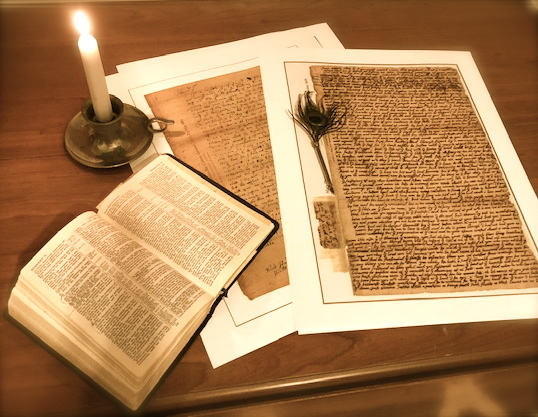 Photo by Christy K Robinson
Photo by Christy K RobinsonThis video describes Mary's letter written the night before she thought she would be hanged, and the way that it was used after her death to stop religious executions in New England.

You may purchase high-resolution reproductions of William Dyer's and Mary Dyer's
handwritten letters here in this site: https://marybarrettdyer.blogspot.com/p/mary-dyer-1659-letter.html
*****

Christy K Robinson is author of these books (click the colored title): We Shall Be Changed (2010) Mary Dyer Illuminated Vol. 1 (2013) Mary Dyer: For Such a Time as This Vol. 2 (2014) The Dyers of London, Boston, & Newport Vol. 3 (2014) Effigy Hunter (2015) Anne Marbury Hutchinson: American Founding Mother (2018)
And of these sites: Discovering Love (inspiration and service)Rooting for Ancestors (history and genealogy)William and Mary Barrett Dyer (17th century culture and history of England and New England)Editornado [ed•i•tohr•NAY•doh] (Words. Communications. Book reviews. Cartoons.)
Published on October 22, 2019 18:00
October 18, 2019
#OnThisDay 18 October 1659
© 2019 Christy K Robinson
“She is to be forthwith executed.”
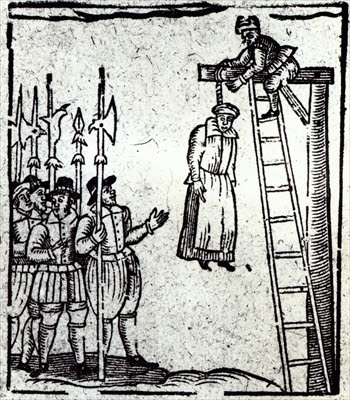 It was a fix.
It was a fix. Many books and articles have been written that say that Mary Dyer was to be executed by hanging on the 27th of October, 1659. That’s what she believed, and that’s what her husband William believed. When their son, William Dyer the younger, perhaps 18 or 19 years old at the time, arrived with a reprieve at the moment Mary stood on the gallows ladder, it was a moment of dramatic theater.
But it was staged.
On Tuesday, the 18th of October, a small group of leaders of the Boston government had decided Mary’s fate and how it would all play out for the thousands of spectators who came out for the hanging of three Quakers. We know this from the Colonial Records of 18 October 1659, which I have modernized for spelling and to correct scanning blips.
“It is ordered that the said Mary Dyer shall have liberty for forty-eight hours to depart out of this Jurisdiction, after which time, being found therein, she is to be forthwith executed. And it is further ordered that she shall be carried to the place of execution and there to stand upon the Gallows with a rope about her neck until the Rest be executed; and then to return to the prison and remain as aforesaid.”
Gov. Endecott and his court had no intention of hanging Mary at this time, since her freedom had been urgently sought by the governor of Nova Scotia and Acadia (Maine), by Gov. John Winthrop Jr. of Connecticut ("as on his knees"), her teenaged son William Dyer, and her husband William Dyer, the attorney general of Rhode Island.
Making a martyr out of this lovely, educated, well-connected woman would be a terrible mistake, and the officials knew it well. Executing the two young men, repeat offenders with their defiance of banishment orders and their proselytizing of beliefs up and down the cities of the Bay, might be justified, and could serve as a deterrent to those who would stand up to authority; but a woman who almost certainly did not preach, but supported her Quaker friends as called to do in the Gospel of Matthew (chapter 25)—no, that would be a disaster of public relations and could bring violent protest and political insurrection. They really, really, really wanted Mary Dyer to go back to Rhode Island and shut up. As they later wrote in a lengthy tract trying to justify and vindicate their actions, the magistrates believed that “the sparing of Mary Dyer upon an inconsiderable intercession, will manifestly evince [that] we desire their life absent rather then their death present.”
So the court came up with this little morality play by which they hoped to frighten Mary Dyer into her predetermined subjugated-woman role, most proper in their Calvinist eyes. Let’s hang her friends, and pretend we’re about to hang her, then we’ll be seen to show tender mercy to the little woman so her boy can take her home.
“It is ordered, that Wm Robinson, Marmaduke Stephenson, & Mary Dyer, Quakers, now in prison for their rebellion, sedition, & presumptuous obtruding themselves upon us, notwithstanding their being sentenced to banishment on pain of death, as underminers of this government, &c, shall be brought before this Court for their trials, to suffer the penalty of the law, (the just reward of their transgression,) on the morrow morning, being the nineteenth of this instant. Wm Robinson, Marmaduke Stephenson, & Mary Dyer, banished this jurisdiction by the last Court of Assistants on pain of death, being committed by order Robinson of the General Court, were sent for, brought to the bar, acknowledged themselves to be the persons banished. After a full hearing of what the prisoners could say for themselves, it was put to the question, whither Wm Robinson, Marmaduke Stevenson, & Mary Dyer, the persons now in prison, who have been convicted for Quakers, & banished this jurisdiction on pain of death, should be put to death according as the law provides in that case. The Court resolved this question on the affirmative; and ye Governor [John Endecott], in open Court, declared the sentence to Wm Robinson, it was brought to ye bar:
“Wm Robinson, you shall go from hence to the place from whence you came, & from thence to the place of execution, & there hang till you be dead.”
The like sentence the Governor, in open Court, pronounced against Marmaduke Stephenson & Mary Dyer, being brought to ye bar one after another, in ye same words.
"Whereeas Wm Robinson, Marmaduke Stephenson, & Mary Dyer are Order require sentenced by this Court to death for their rebellion, &c, it is ordered, that the secretary [Rawson] issue out his warrant to Edward Michelson, marshal general, repairing to the prison on the twenty seventh of this instant October, & take the said William Robinson, Marmaduke Stephenson, & Mary Dyer into his custody, & then forthwith, by the aide of Capt James Oliver with one hundred soldiers, taken out by his order proportionably out of each company in Boston, completely armed with pike, & musketeers, with powder & bullet, to lead them to the place of execution, & there see them hang till they be dead, and in their going, being there, & return, to see all things be carried peaceably & orderly.”
Warrants issued out accordingly.
It is ordered, that the Reverend Mr Zechariah Symmes & John Norton repair to the prison, & tender their endeavors to make the prisoners sensible of their approaching danger by the sentence of this Court, & prepare them for their approaching ends.
Rev. Zechariah Symmes had emigrated on the Griffin with Anne Hutchinson’s family in 1634, had publicly criticized Anne, and he had been one of the inquisitors at the Hutchinson trials for sedition and heresy in the fall and spring of 1637-38. Symmes was well-acquainted with Mary Dyer, the mother of a “monster” miscarriage that proved God’s judgment on Mary’s heresy in following Anne Hutchinson. Symmes was sure to look on Mary Dyer with distaste and disapproval, even 21 years later.
Rev. John Norton had arrived in Boston just as Anne Hutchinson was tried for heresy, and Mary Dyer had taken Anne’s hand in support, which exposed Mary to the community as the woman who had given birth to the “monster,” a premature fetus with no brain, and spina bifida. In 1652, on the death of Rev. John Cotton, he succeeded as the Teacher of Boston’s First Church.
“Tendering their endeavors” would not have been at all tender, as we know it in modern terms.
Whereas Mary Dyer is condemned by the General Court to be executed for her offences, on the petition of William Dyer, her son, it is ordered, that the said Mary Dyer shall have liberty for forty-eight hours after this day to depart out of this jurisdiction, after which time, being found therein, she is forthwith to be executed, & in the meantime that she be kept close prisoner till her Son or some other be ready to carry her away within the aforesaid time; and it is further ordered, that she shall be carried to the place of execution, & there to stand upon the gallows, with a rope about her neck, till the rest be executed, & then to return to the prison & remain as aforesaid.
It is ordered, that thirty-six of the soldiers be ordered by Capt. Oliver to remain in & about the town as sentinels to preserve the peace of the place while the rest go to the execution.
The magistrates feared an insurrection by the citizens of Massachusetts Bay Colony, of whom thousands of people were in the city for the quarterly court business and legislative matters. Thirty-six soldiers were ordered to remain in the town of Boston to keep order while the prisoners and execution officials were taken by 100 pikemen and musketeers to the gallows on Boston Neck, just outside the fortified gate to the town. The plan to guard Boston—and the magistrates themselves—required advance orders.
Source for the colonial records above: http://ia600302.us.archive.org/34/items/recordsofgoverno41mass/recordsofgoverno41mass.pdf
*****

Christy K Robinson is author of these books (click the colored title): We Shall Be Changed (2010) Mary Dyer Illuminated Vol. 1 (2013) Mary Dyer: For Such a Time as This Vol. 2 (2014) The Dyers of London, Boston, & Newport Vol. 3 (2014) Effigy Hunter (2015) Anne Marbury Hutchinson: American Founding Mother (2018)
And of these sites: Discovering Love (inspiration and service)Rooting for Ancestors (history and genealogy)William and Mary Barrett Dyer (17th century culture and history of England and New England)Editornado [ed•i•tohr•NAY•doh] (Words. Communications. Book reviews. Cartoons.)
Published on October 18, 2019 00:00

